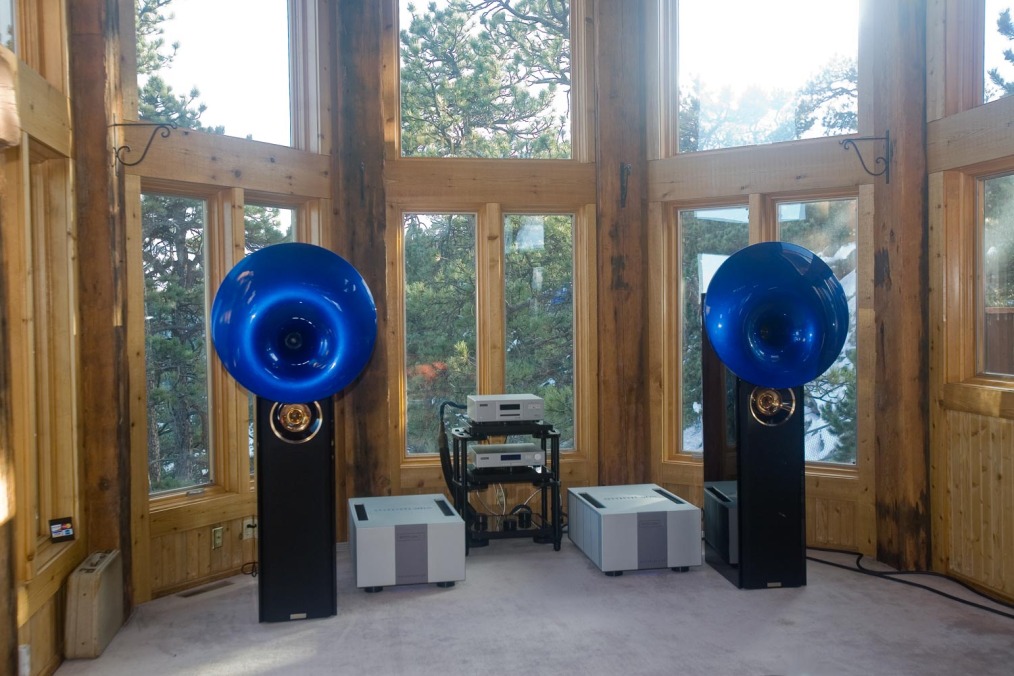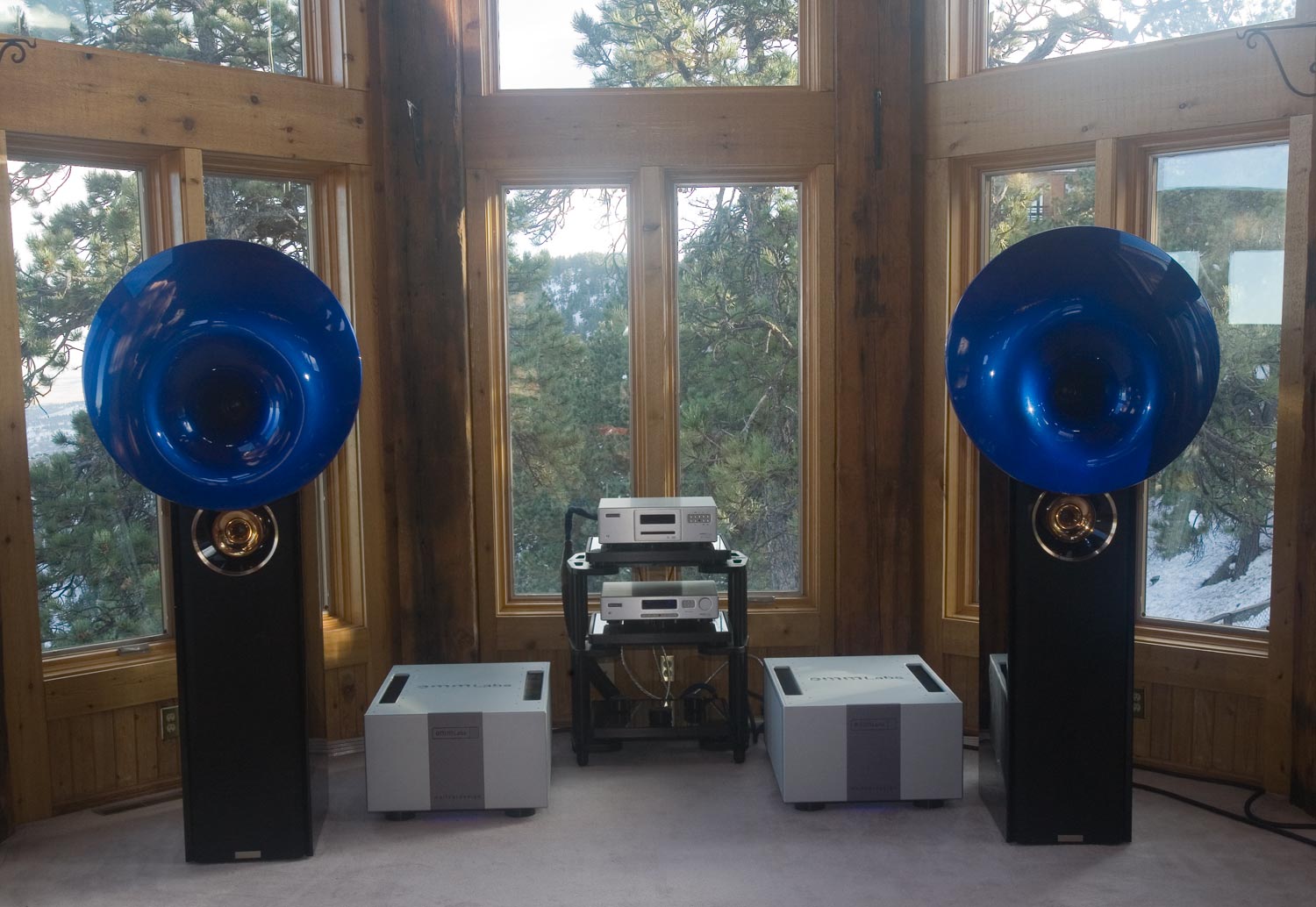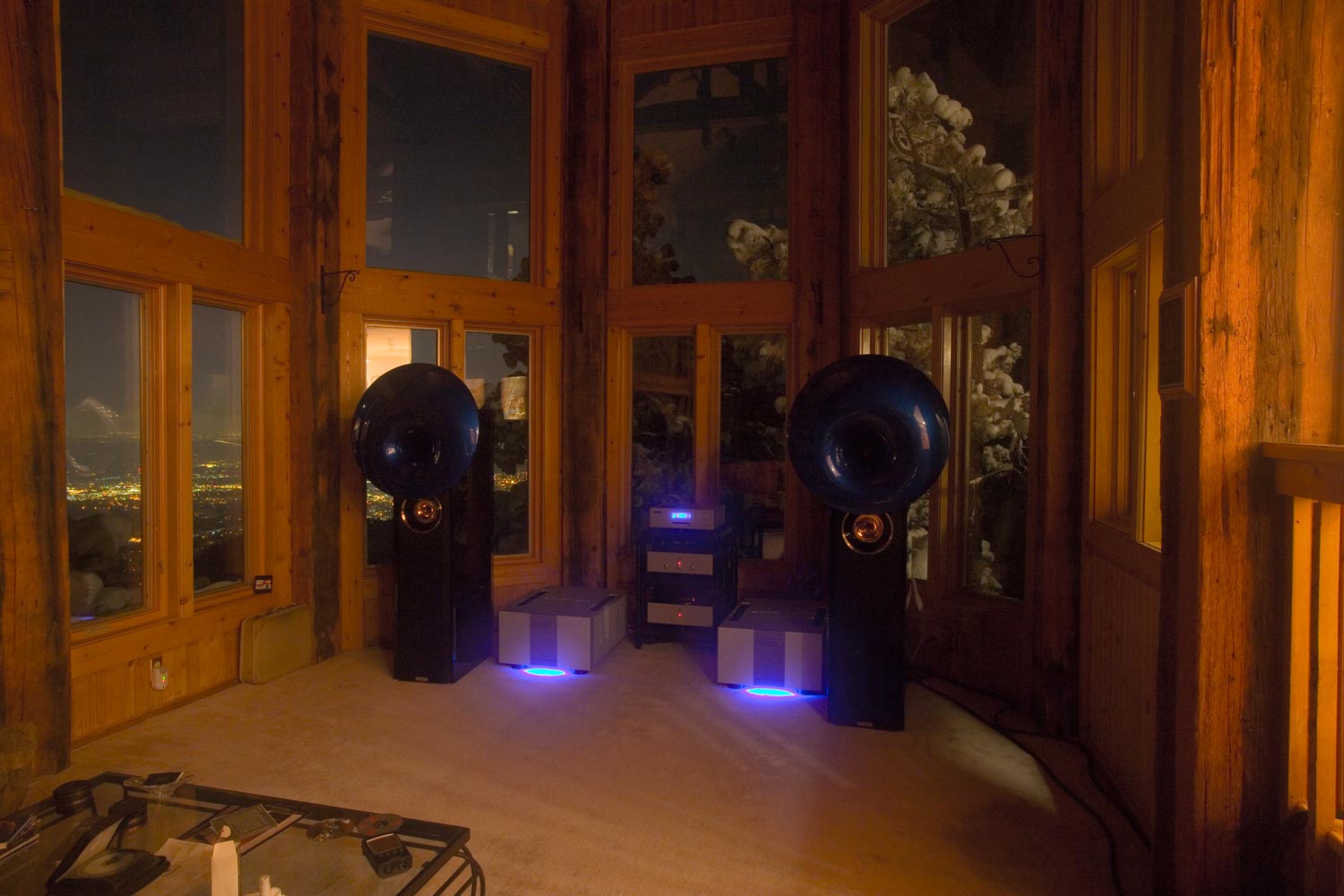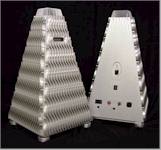EMM Labs MTRX amplifiers day 15 report.
I want to talk a little about our history with amplifiers.
Our first real amplifier were Levinson 20.6 100 watt/channel pure class A amplifiers. We got them about four years old, used [from Alvino at the old Sound Hounds. We still see Alvino at RMAF once in awhile. If you want to blame someone, blame him :-)], and they were so much better than the $4K Denon and the Adcom 555 (I think) before that. So much more authority and openness. The Levinsons warmed our living-room during the Winters and heated it to near intolerable levels during the summers for about 5 years.
Then we got the Edge NL10 amps. So much clearer, much more resolution, more life.
It was just a few years later when we got the Lamm ML2.1 single-ended tube amps here. Music. Sweet Music. This was not just great sound, but music.
Then there were the Audio Note UK Kegon 300B SET amps. This is when ‘drug-like’ sound started to infect me. When I started getting random flashbacks to when I was young and ‘hearing’ music for the first time. This was when my life opened up, and I chose to live a life that was accepting of any and all, but still all too rare, not-your-ordinary-everyday mind-altering ‘music experiences’.
And this lifestyle required tube amps.
Because solid-state amps sound D.E.A.D. Or at least, they used to.
All the vocals on solid-state sound as if the singer was a tired over-worked professional belting out the 34th take in a sterile, smoke-filled studio in some drab building in the big city. They ‘fake’ any emotional involvement in the song.
All my life, until tubes, this is how I thought music sounded. Listening to music like this, it was still enjoyable. It is not like there is a choice provided to most people. It is either solid-state sound, or no music at all.
Like music on TV, Lawrence Welk – all the fake smiles and fake emotions. No emotion in any music. When learning guitar or in the [required Junior High School] glee club – when they said ‘Emote!’ I had no idea what the heck they were talking about. None of the music I had heard had any emotion in it. It was all reproduced with solid-state. And later bad digital. I thought professional musicians were not supposed to emote, it wasn’t professional.
A month or so ago, we had an 100% solid-state system here for a few weeks. No tubes. At all. And the above paragraph describes the truth that I re-realized about my, and probably many others, relationship to music and the lack of real human everyday emotion in most of it… if you listen to it on solid-state equipment.
Fred posted a comment a few weeks ago about how he did not care how the MTRX compared to other solid-state – how did it compare to the best tube amps?
Well, I’ve finally moved past a lot of the need, that I personally felt, to compare it to other solid-state amps. I’ve gone down the list of other amps and determined how and why they had not met my needs. They did not support my ‘musical mind-altering lifestyle’.
Essentially, solid-state amps have been unable to convey real, honest-to-goodness we hear it everyday, human emotion.
A few weeks ago our solid-state system was the EMM XDS1 CD player and EMM Labs PRE2 into the Edge M12 amps. All are on the musical side of neutral. But no emotion. D.E.A.D.
But yesterday we put in the EMM Labs PRE2 in to replace the [tube-based] Audio Note M9 Phono preamplifier. We are 100% solid-state, again.
But there is still emotion! It is different. A little bit different. There is not that tube-driven dynamic swell of exuberance for each note like tubes provide [what is more ‘real’?]. But there is sufficient resolution and control of the dynamic swings in a voice that there is actually some emotion communicated from the musician to the listener here.
We have been enjoying a very rich Heart and Mind sound here, with the AN M9Phono in the system. It is hard to weigh and tell you the ratio of Heart to Mind that that system has, as my mind is still very, very fascinated by what the MTRX are doing. So much clarity and so much more dynamics and accuracy and so like real music.
All I can say is that there IS some heart to the EMM Labs MTRX amplifiers, unlike any solid-state amp I have heard.
Or, I think, they are able to let through the subtle details of the music, the details that convey emotion from one human to another. Subtleties of breath inhalation and exhalation, subtleties of harmonic structure changes in a voice, the slight off-the-beat notes that indicate suspense or excitement, depending on if they occur right before or right after the beat used by the rest of the music. Solid-state amps haven’t been able to do any of this stuff [yeah, I know, some very famous reviewers do not care. To them music must be fine without the ‘subtleties of emotion’. But that doesn’t mean that we have to think it is fine, too.].
These subtle details are required for my personal music-holic lifestyle. Not sure I can ‘travel to strange new worlds’ in my listening chair without them.
“Engage warp drive, Sulu”… I mean ‘MTRX drive’.








